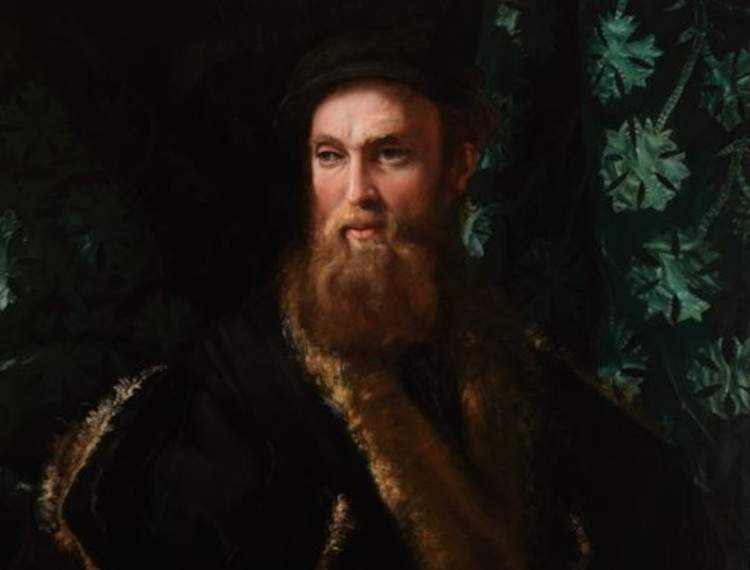The Metropolitan Museum of Art has received a gift of a major oil painting on stone by 16th-century Italian artist Francesco Salviati (Florence, 1510 - Rome, 1563). It is the first major painting on stone to enter the museum’s collection. The work, donated by theAssadour O. Tavitian Trust, depicts the portrait of Bindo Altoviti (1491-1557), a powerful Florentine banker.
Born in Rome, of Florentine descent, Bindo Altoviti was one of the wealthiest and most influential men of his time. He conducted a shrewd policy of lending to popes, the Republic of Venice and powerful people of Europe such as King Henry II of France. Head of the Florentine community in Rome, he maintained a neutral stance toward the Medici family until he became a supporter of Pope Paul III Farnese. From the late 1540s Bindo was openly anti-Medicean, and in 1554 he was finally declared a rebel by Cosimo I de’ Medici. A great patron of the arts, Bindo let himself be portrayed at various stages of his life: as a young man around 1512 by Raphael, and several years later by Francesco Salviati, in 1549 in a bronze bust of Benvenuto Cellini.
“The artistic importance and historical grandeur of this painting cannot be overstated,” said Max Hollein, Marina Kellen French Director at the Met. “Salviati’s work is extraordinary, both in its material aspect, on marble, and in its pictorial execution. The portrait brilliantly captures the immense wealth and social standing of the subject, while also conveying his bold, cultured and independent nature. We are infinitely grateful for this gift to our collections.”
"This portrait adds to the Metropolitan Museum’s important collection of sixteenth-century Italian portraits," commented Stephan Wolohojian, John Pope-Hennessy Curator in Charge of the Department of European Paintings. "It is truly an honor and a thrill to add this extraordinary painting to this collection. Artists in 16th-century Rome often painted on slate. Painting on stone, however, was incredibly rare. I know of no other portrait of this great size on stone from the 16th century. Salviati returned to Rome in the early 1640s after a long stay in the artistic centers of northern Italy, such as Venice and Bologna, and the chromatic richness and textural opulence of this portrait come from there. It is likely that Bindo called an artist to portray him on stone in a non-Florentine manner as a gesture of defiance against the Medici."
Francesco de’ Rossi, better known as Francesco Salviati, was among the most famous painters and draftsmen of the 16th century. He was Florentine by birth, but his career was marked by long periods spent in Rome and northern Italy, especially Venice and Bologna. His style is evident in his naturalistic portrait of Bindo, made at the height of the banker’s career. Salviati depicted him wearing a hat and fur-trimmed coat, resting on soft red cushions adorned with gold trim and tassels in front of a green velvet curtain embroidered with satin silk patterns. The attribution of the portrait has been disputed in the past, but now the portrait is attributed with certainty to Salviati.
Image: Francesco Salviati, Portrait of Bindo Altoviti, detail (c. 1545; oil on stone, 88 x 73 cm; New York, Metropolitan Museum of Art). Gift of the Assadour O. Tavitian Trust.
 |
| Important 16th-century painting on stone by Francesco Salviati donated to the Metropolitan Museum |
Warning: the translation into English of the original Italian article was created using automatic tools. We undertake to review all articles, but we do not guarantee the total absence of inaccuracies in the translation due to the program. You can find the original by clicking on the ITA button. If you find any mistake,please contact us.